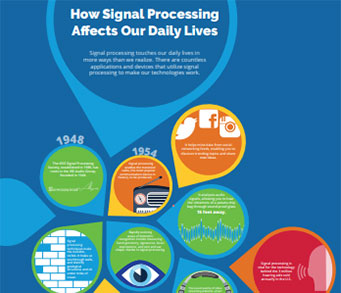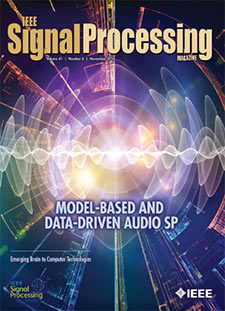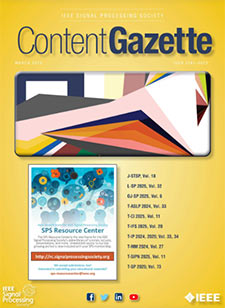- Our Story
- Publications & Resources
- Publications & Resources
- Publications
- IEEE Signal Processing Magazine
- IEEE Journal of Selected Topics in Signal Processing
- IEEE Signal Processing Letters
- IEEE Transactions on Computational Imaging
- IEEE Transactions on Image Processing
- IEEE Transactions on Information Forensics and Security
- IEEE Transactions on Multimedia
- IEEE Transactions on Signal and Information Processing over Networks
- IEEE Transactions on Signal Processing
- IEEE TCI
- IEEE TSIPN
- Data & Challenges
- Submit Manuscript
- Guidelines
- Information for Authors
- Special Issue Deadlines
- Overview Articles
- Top Accessed Articles
- SPS Newsletter
- SigPort
- SPS Resource Center
- Publications FAQ
- Blog
- News
- Dataset Papers
- Conferences & Events
- Community & Involvement
- Professional Development
- For Volunteers
- Information for Authors-OJSP
-
Home
Conferences Events IEEE Signal Processing Magazine IEEE SPL Article IEEE TIFS Article IEEE TMM Article IEEE TSP Article Jobs in Signal Processing Lectures Machine Learning Seasonal Schools Signal Processing News SPM Article SPS Distinguished Lectures SPS Newsletter Article SPS Webinar SPS Webinars SPS Webinar Series Webinar webinars
-
Our Story
What is Signal Processing?

The technology we use, and even rely on, in our everyday lives –computers, radios, video, cell phones – is enabled by signal processing. Learn More » -
Publications & Resources
-
SPS Resources
- Signal Processing Magazine The premier publication of the society.
- SPS Newsletter Monthly updates in Signal Processing
- SPS Resource Center Online library of tutorials, lectures, and presentations.
- SigPort Online repository for reports, papers, and more.
- SPS Feed The latest news, events, and more from the world of Signal Processing.
-
SPS Resources
-
Conferences & Events
-
Community & Involvement
-
Membership
- Join SPS The IEEE Signal Processing Magazine, Conference, Discounts, Awards, Collaborations, and more!
- Chapter Locator Find your local chapter and connect with fellow industry professionals, academics and students
- Women in Signal Processing Networking and engagement opportunities for women across signal processing disciplines
- Students Scholarships, conference discounts, travel grants, SP Cup, VIP Cup, 5-MICC
- Young Professionals Career development opportunities, networking
- Get Involved
-
Technical Committees
- Applied Signal Processing Systems
- Audio and Acoustic Signal Processing
- Bio Imaging and Signal Processing
- Computational Imaging
- Image Video and Multidimensional Signal Processing
- Information Forensics and Security
- Machine Learning for Signal Processing
- Multimedia Signal Processing
- Sensor Array and Multichannel
- Signal Processing for Communication and Networking
- Signal Processing Theory and Methods
- Speech and Language Processing
- Technical Working Groups
- More TC Resources
-
Membership
-
Professional Development
-
Professional Development
- Signal Processing Mentorship Academy (SigMA) Program
- Micro Mentoring Experience Program (MiME)
- Distinguished Lecturer Program
- Distinguished Lecturers
- Distinguished Lecturer Nominations
- Past Lecturers
- Distinguished Industry Speaker Program
- Distinguished Industry Speakers
- Distinguished Industry Speaker Nominations
- Industry Resources
- IEEE Training Materials
- Jobs in Signal Processing: IEEE Job Site
-
Career Resources
- SPS Education Program Educational content in signal processing and related fields.
- Distinguished Lecturer Program Chapters have access to educators and authors in the fields of Signal Processing
- Job Opportunities Signal Processing and Technical Committee specific job opportunities
- Job Submission Form Employers may submit opportunities in the area of Signal Processing.
-
Professional Development
-
For Volunteers
-
For Board & Committee Members
- Board Agenda/Minutes* Agendas, minutes and supporting documentation for Board and Committee Members
- SPS Directory* Directory of volunteers, society and division directory for Board and Committee Members.
- Membership Development Reports* Insight into the Society’s month-over-month and year-over-year growths and declines for Board and Committee Members
-
For Board & Committee Members
Popular Pages
Today's:
- Information for Authors
- (ICME 2026) 2026 IEEE International Conference on Multimedia and Expo
- IEEE Transactions on Image Processing
- IEEE Transactions on Information Forensics and Security
- IEEE Signal Processing Letters
- Submit a Manuscript
- IEEE Transactions on Multimedia
- Conference Call for Papers
- Information for Authors-SPL
- IEEE Journal of Selected Topics in Signal Processing
- (ASRU 2025) 2025 IEEE Automatic Speech Recognition and Understanding Workshop
- IEEE Transactions on Signal Processing
- (ICIP 2026) 2026 IEEE International Conference on Image Processing
- Unified EDICS
- Editorial Board
All time:
- Information for Authors
- Submit a Manuscript
- IEEE Transactions on Image Processing
- IEEE Transactions on Information Forensics and Security
- IEEE Transactions on Multimedia
- IEEE Transactions on Audio, Speech and Language Processing
- IEEE Signal Processing Letters
- IEEE Transactions on Signal Processing
- Conferences & Events
- IEEE Journal of Selected Topics in Signal Processing
- Information for Authors-SPL
- Conference Call for Papers
- Signal Processing 101
- IEEE Signal Processing Magazine
- Guidelines
Last viewed:
- Jobs in Signal Processing
- Members
- SPCOM TC Home
- (ICME 2026) 2026 IEEE International Conference on Multimedia and Expo
- Santa Clara Valley Chapter
- Special Issue on Vulnerabilities, Threats, and Authentication in Satellite-Based Navigation Systems
- Society History
- (SPAWC 2025) 2025 IEEE Workshop on Signal Processing and Artificial Intelligence for Wireless Communications
- Distinguished Lecturer: Brian Sadler (Army Research Laboratory, USA)
- Access Restricted
- Call for Papers for ICASSP 2026 Now Open!
- SPS Scholarship Program
- IEEE JSTSP Special Series on Artificial Intelligence for Smart Agriculture
- Students
- (ISBI 2026) 2026 IEEE 23rd International Symposium on Biomedical Imaging
Now’s the Time to Think About What Comes After 5G
You are here
Newsletter Menu
Newsletter Categories
Top Reasons to Join SPS Today!
1. IEEE Signal Processing Magazine
2. Signal Processing Digital Library*
3. Inside Signal Processing Newsletter
4. SPS Resource Center
5. Career advancement & recognition
6. Discounts on conferences and publications
7. Professional networking
8. Communities for students, young professionals, and women
9. Volunteer opportunities
10. Coming soon! PDH/CEU credits
Click here to learn more.
News and Resources for Members of the IEEE Signal Processing Society
Now’s the Time to Think About What Comes After 5G

5G technology, with its promises of self-driving vehicles and immersive virtual reality, will be a data-hungry generation of wireless communications. But engineers have been so preoccupied with designing and building the low-latency networks for these emerging applications that they’ve neglected the rest of our vast, tangled telecom networks. The result is that there’s now a growing gap between the capabilities of the fixed and mobile sides of these networks. Michael Koziol present an article in Spectrum in December 2018 in which he claims that Now’s the Time to Think About What Comes After 5G. In the article, he claims that we should think of the mobile side as the antennas and radio waves that deliver data to our devices. This is the side that has gotten a lot of attention in recent years with the advent of beamforming and millimeter waves. The fixed side is everything else—the cables, fibers, and switches that handle our long-distance communications. The United Nations’ International Telecommunication Union (ITU), an agency that coordinates telecom infrastructure between countries, launched a focus group in August to address this emerging imbalance in wireless communications.
- “Right now, when people start deploying [5G], it’s the mobile side,” says Richard Li, the chief scientist of future networks at Huawei and the chairman of the ITU Network 2030 focus group. “But the fixed network side is still 4G. They do not match.” The upshot is that while the larger amounts of data heralded by 5G will zip through edge infrastructure without delay, once that same data reaches the less-advanced core infrastructure it could very well be throttled.
- A big part of the problem is that the way data moves through our networks has been designed for efficiency on the mobile side. In the process, according to Li, our networks have become redundant and prone to clogging on the fixed side.
There’s no guarantee that today’s fixed networks can meet the demands of 5G, Li says. 5G promises low latency but has little to say on the topic of throughput. Low latency is meaningless if so many data packets move through the network that they cause continuous delays.
For example, people using VR goggles feel dizzy if the delay between when they look at something and when their screen refreshes is 20 milliseconds or more. If 5G delivers low enough latency to handle image capturing, framing, transmitting, displaying—everything needed for VR experiences—in 20 ms, that will leave only 5 to 7 ms to transport the data through the network in both directions, Li estimates. Most fixed networks simply don’t have a high-enough throughput to move all that data without requiring it to wait at switches and routers.
The next generation, 6G, will likely bring applications with even higher throughput requirements. Li says autonomous vehicles, massive machine-type communications, tactile Internet, and holographic communications are all on the table for the coming years. But the current fixed side won’t be able to withstand the coming surge. Li says the Network 2030 group isn’t going to play catch-up to 5G, nor does he want the group to think in terms of what 6G might be. Instead, he’s prepared to take a broad view of what future generations of communication technology will bring and what they might require of the network’s backbone. “Fixed networks that will be able to support 6G networks: That’s the key,” he says.
Open Calls
| Nomination/Position | Deadline |
|---|---|
| Call for Nominations: Awards Board, Industry Board and Nominations & Elections Committee | 19 September 2025 |
| Take Part in the 2025 Low-Resource Audio Codec (LRAC) Challenge | 1 October 2025 |
| Meet the 2025 Candidates: IEEE President-Elect | 1 October 2025 |
| Call for proposals: 2027 IEEE Conference on Artificial Intelligence (CAI) | 1 October 2025 |
| Call for Nominations for the SPS Chapter of the Year Award | 15 October 2025 |
| Call for Papers for 2026 LRAC Workshop | 22 October 2025 |
| Submit a Proposal for ICASSP 2030 | 31 October 2025 |
| Call for Project Proposals: IEEE SPS SigMA Program - Signal Processing Mentorship Academy | 2 November 2025 |
Publications News
Society News
- SPS Announces 2019 Class of Distinguished Lecturers and Distinguished Industry Speakers
- Student Activities Committee - Changes in the Operations Manual, Section 9.4
- Job Opportunities in Signal Processing
- New SPS Technical Interest Profile Codes
- OU Analytics User Group
- Chapter Meeting Activity and Officer Reporting
- Student Branch Connection
- Malaysia Chapter Receives the 2018 Chapter of the Year Award!
- Inactive Chapters
- New MD Kit Portal - Custom Orders Now Available
- Upcoming Distinguished Lectures
Technical Committee News
Conferences & Events
SPS Social Media
- IEEE SPS Facebook Page https://www.facebook.com/ieeeSPS
- IEEE SPS X Page https://x.com/IEEEsps
- IEEE SPS Instagram Page https://www.instagram.com/ieeesps/?hl=en
- IEEE SPS LinkedIn Page https://www.linkedin.com/company/ieeesps/
- IEEE SPS YouTube Channel https://www.youtube.com/ieeeSPS
Home | Sitemap | Contact | Accessibility | Nondiscrimination Policy | IEEE Ethics Reporting | IEEE Privacy Policy | Terms | Feedback
© Copyright 2025 IEEE - All rights reserved. Use of this website signifies your agreement to the IEEE Terms and Conditions.
A public charity, IEEE is the world's largest technical professional organization dedicated to advancing technology for the benefit of humanity.









